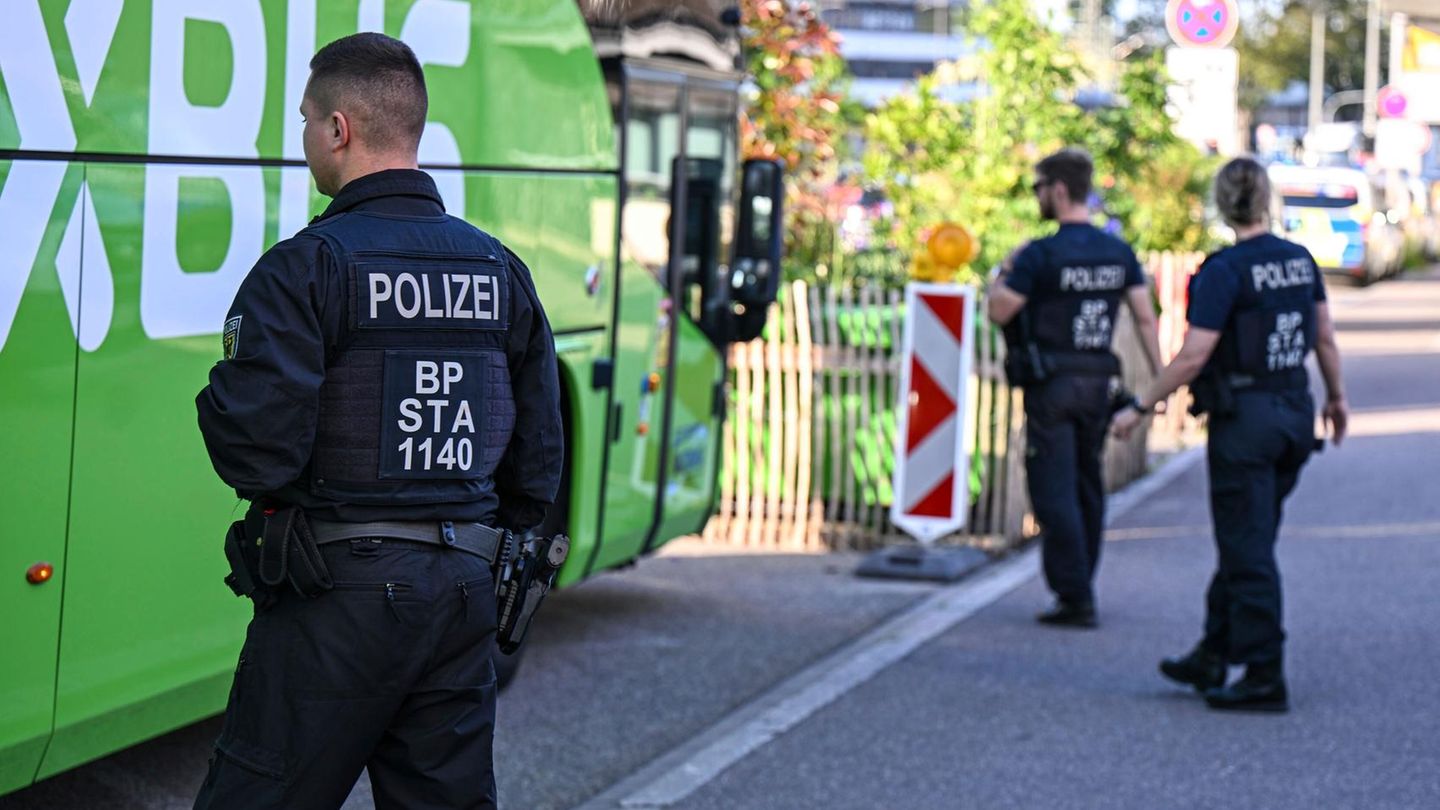questions and answers
Turn in asylum policy? These are the new rules on the limits
Copy the current link
Add to the memorial list
The Union has long been calling for a fundamental change in German asylum policy. Now the turn should finally take place – which is now changing.
Union politicians have aroused great expectations in terms of control of irregular migration. Now the new Federal Minister of the Interior Alexander Dobrindt (CSU) has explained how it should work in the future. The most important questions and answers:
Are the boundaries now checked across the board?
No, but in the coming weeks there will be more federal police officers – and not only on the highways, but sometimes also in other places. They want to gradually increase the number of police officers.
Are asylum seekers no longer on the country path to Germany?
According to Dobrindt, not every asylum seeker who the federal police meets at the border is to be rejected. However, the only fact that someone expresses an asylum application should no longer automatically prevent a rejection in the future. One strives for a balance between “Humanity and order” on, says the minister. For example, pregnant women and children will not be rejected.
What kind of asylum policy did Friedrich Merz want before the election?
Before the election, CDU boss Friedrich Merz had announced that it would indicate the Interior Ministry as a Chancellor on the first day in office, to permanently control all borders and reject all illegal entry. This also applies to people with a right to protect. He said: “There will be a factual ban on entry into the Federal Republic of Germany for everyone who does not have valid entry documents or which make use of European freedom of movement.” The EU asylum rules are dysfunctional.
“Germany must therefore make use of its right to priority of national law”said Merz. Border controls can be arranged for a limited period in the Schengen area. Former Interior Minister Nancy Faeser (SPD) had gradually done this for all land borders.
What is in the CDU, CSU and SPD coalition agreement?
“In coordination with our European neighbors, we will also make rejections at the common limits even in the event of asylum applications.” Last year, 229,751 people made an asylum application for the first time in Germany. That was around 100,000 asylum applications less than in the previous year.
Are rejections new?
No. The prerequisites for rejections are inpatient border controls. So far, people with a reinforcement lock – for example after deportation – have been rejected. This also applies to people without a visa who do not express asylum.
Clara Bünger, domestic politician of the left, is convinced that asylum seekers have been rejected in the past few months. “Today I spoke to several people at the German-Polish border who wanted to apply for asylum and yet rejected by the federal police”reported the member of the Bundestag.
Since the arrangement of inpatient controls at all land borders last September, around 34,000 unauthorized entry have been found, according to Federal Police President Dieter Romann, and people have been rejected or pushed back in about 23,000 of these cases.
Is the staff enough for permanent border controls?
Opinions differ. On the one hand, even more controls bind even more civil servants who are used directly at the borders. On the other hand, a rejection takes less time than data acquisition and support for the initial reception facility by the federal police if someone can stay in Germany for now.
The supporters of the new rules also hope that they have a deterrent, so that the number of people who come unauthorized. Dobrindt said “that I know that this means an additional task for the police officers”. However, he promised that there would be relief on the other side.
There is an EU asylum reform-does it not reach?
No. In May 2024, the EU countries agreed on a common asylum reform after years of negotiations-but it takes time. The national implementation plans were presented at the end of 2024, and the new rules should apply by June 2026 at the latest.
Some politicians and experts hope that fewer people will come to Germany with low chances of success. Stricter procedures at the external borders could deter and ensure better distribution within Europe.
What could trigger rejections politically in the EU?
There are two different assessments: Some warn that a German solo by rejecting those seeking protection can undermine trust between the EU countries. Such a step – especially if it is based on a legally attackable basis – could persuade other member countries to set their cooperation in the asylum system. In the worst case, the laboriously achieved agreement on a common European asylum policy could slip.
Other experts think this is unlikely. In numerous EU countries, there is a growing interest in a strict migration control in numerous EU countries-also at the political level. The concern that generous asylum standards of individual states could have a suction effect has been expressed for a long time.
Instead of relying on confrontation, many governments could therefore even be inclined to support a harder line if they contribute to a stronger limitation of irregular migration in the medium term. Bavaria’s Interior Minister Joachim Herrmann (CSU) is certain: “There will be no problem at all.”
Is that all legally possible?
The legal situation for rejections at the border is currently not clear. Some experts read applicable EU law in such a way that rejections are generally not allowed. This is also due to the fact that border controls are practically not exactly on the border line, but often something behind it. In addition, it is actually intended that at least a short procedure with survey and recognition treatment must be carried out in order to determine which Member State is responsible for the asylum procedure.
However, under certain conditions, EU law gives the opportunity to deviate from these rules. Article 72 of the Treaty on the Working method of the European Union (TFEU) allows exceptions if public order or national security is threatened – a so -called emergency clause.
However, it is open whether such an emergency is actually available and whether an appeal to this clause would be legitimate in the specific case. The decision about this was ultimately with the European Court of Justice (ECJ), which has previously been very restrictive with such exceptional regulations.
Is that the break with the refugee policy of ex-channel Angela Merkel?
In a way, yes. In September 2015, the then Chancellor Angela Merkel (CDU) decided that protection seekers who have a stuck in Hungary should continue to Germany for humanitarian reasons. As a result, the number of asylum seekers – especially from Syria – rose significantly. A rejection of these people at the German border was discussed in the Federal Ministry of the Interior, but was not implemented.
Dpa
TIS / Anne-Beatrice Clasmann and Stella Venohr
Source: Stern
I have been working in the news industry for over 6 years, first as a reporter and now as an editor. I have covered politics extensively, and my work has appeared in major newspapers and online news outlets around the world. In addition to my writing, I also contribute regularly to 24 Hours World.





